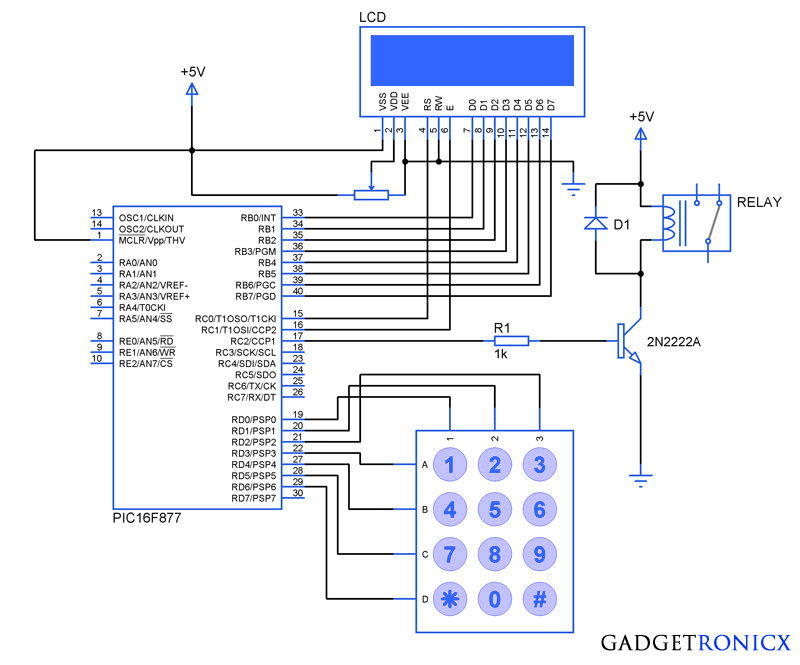 |
| Electronic Combination lock PIC Mircocontroller |
Electronic code locking system is extremely useful in protecting our precious possessions and can be installed anywhere with bit of engineering in it. We are widely familiar with the Password based e-locks and might have installed in our house. But we are going for Electronic locks made by any company when you can make one by your own.
This project demonstrates you how to make a PIC microcontroller based simple digital lock and also explains the programming behind it.
WHAT YOU NEED:
- PIC 16F877 Microcontroller
- 4×3 Keypad – Key Input
- 16×2 LCD – Status Indicator
- 5V Relay – Activator
Additionally you need a POT which is used to adjust the contrast of the LCD, A transistor to drive the relay since the current obtained from a Pin of Microcontroller is very less. A diode to prevent the reverse flow of current which might damage the controller.
DESIGN OF ELECTRONIC CODE LOCKING SYSTEM:
The design of the above Embedded Project is pretty straight forward, you need to interface a LCD to PORT B and Keypad to the PORT D of the Controller. If you are not familiar with it then i suggest you to go through this Interfacing LCD and Keypad with PIC Microcontroller. Now lets see how the system is designed to work as a Locker.
- “*” Key – This key is meant to initialize the system, when the system is turned ON the Controller will scan only this key and pressing this key will enable you to enter the password for your locker.
- “#” Key – When you are done with your locker , you should press this key which will turn off the system and turning off the relay as well.
The remaining keys are meant to feed the character values to the Microcontroller and in turn the Microcontroller will analyze the characters. Based on the Pre defined password in the Controller it will compare the input with it. Thereby it will recognize the correct or incorrect password input.
CODE:
#include<16F877.h>
#include<stdio.h>
#bit led=0x05.0
#bit TRIS_led=0x85.0
#byte lcd=0x06
#byte TRIS_lcd=0x86
#bit rs=0x07.0
#bit TRIS_rs=0x87.0
#bit en=0x07.1
#bit TRIS_en=0x87.1
#bit relay=0x07.2
#bit TRIS_relay=0x87.2
#bit C1=0x08.0
#bit C2=0x08.1
#bit C3=0x08.2
#bit R1=0x08.3
#bit R2=0x08.4
#bit R3=0x08.5
#bit R4=0x08.6
#bit TRIS_C1=0x88.0
#bit TRIS_C2=0x88.1
#bit TRIS_C3=0x88.2
#bit TRIS_R1=0x88.3
#bit TRIS_R2=0x88.4
#bit TRIS_R3=0x88.5
#bit TRIS_R4=0x88.6
void display(unsigned char a,int b); //LCD subroutine
char keypad(); //Keypad Subroutine
void check(); //Password check routine
char password[5]={"7196"}; //Predefined password
char pswd[5];
unsigned char open_msg[15]="Enter Password";
unsigned char welcome_msg[8]="Welcome";
unsigned char close_msg[15]="Wrong Password";
char c;
int flag,i,count,j;
void main()
{
TRIS_lcd=TRIS_en=TRIS_rs=TRIS_led=TRIS_relay=0; //Directions set
TRIS_R1=TRIS_R2=TRIS_R3=TRIS_R4=count=0;
TRIS_C1=TRIS_C2=TRIS_C3=1;
while(TRUE)
{
c=keypad();
{
if(c=='*') //Initialize condition
{
flag=1; //Flag set to scan other keys
count=0;
display(0x01,0);
display(0x38,0);
display(0x0f,0);
display(0x80,0);
for(i=0;i<=13;i++)
{
display(open_msg[i],1);
}
display(0xc0,0);
}
else if(c=='#') //Turning off condition
{
count=0;
relay=0;
display(0x01,0);
display(0x0c,0);
}
else
{
display('*',1);
pswd[count]=c; //Storing input in new arrays
count=count+1;
check();
}
}
}
}
void display(unsigned char a,int b)
{
lcd=a;
rs=b;
en=1;
delay_ms(10);
en=0;
delay_ms(10);
}
char keypad()
{
if(flag==0) //Waiting for Initialization
{
while(TRUE)
{
R4=1;
R1=R2=R3=0;
if(C1==1)
{
while(C1==1);
count=0;
return '*';
}
if(C3==1)
{
while(C3==1);
count=0;
return '#';
}
}
}
else if(flag==1)
{
while(TRUE) //Keypad scan
{
R1=1;
R2=R3=R4=0;
if(C1==1)
{
while(C1==1);
return '1';
}
if(C2==1)
{
while(C2==1);
return '2';
}
if(C3==1)
{
while(C3==1);
return '3';
}
R2=1;
R1=R3=R4=0;
if(C1==1)
{
while(C1==1);
return '4';
}
if(C2==1)
{
while(C2==1);
return '5';
}
if(C3==1)
{
while(C3==1);
return '6';
}
R3=1;
R1=R2=R4=0;
if(C1==1)
{
while(C1==1);
return '7';
}
if(C2==1)
{
while(C2==1);
return '8';
}
if(C3==1)
{
while(C3==1);
return '9';
}
R4=1;
R1=R2=R3=0;
if(C1==1)
{
while(C1==1);
return '*';
}
if(C2==1)
{
while(C2==1);
return '0';
}
if(C3==1)
{
while(C3==1);
return '#';
}
}
}
}
void check()
{
if(count>3) //Input exceeds count 3 will execute comparison
{
flag=count=0;
j=strcmp(pswd,password); //Comparison of input and Predefined pswd
if(j==0)
{
relay=1; //Turning relay on
display(0x01,0);
display(0x80,0);
for(i=0;i<=6;i++)
{display(welcome_msg[i],1);}
}
else
{
relay=0;
display(0x01,0);
display(0x80,0);
for(i=0;i<=13;i++)
{display(close_msg[i],1);}
}
}
}
NOTE:
- You can add additional security by adding trial above code.
- It can be done by making the trial value to increase for every wrong password input and checking the condition whether it exceeds the desired trial value.
- Once it exceeds the desired trial value disable the keypad scan and display message “No more trials” in the LCD.
- You can also add speaker to sound a alarm once the trial exceeds to alert the people nearby.

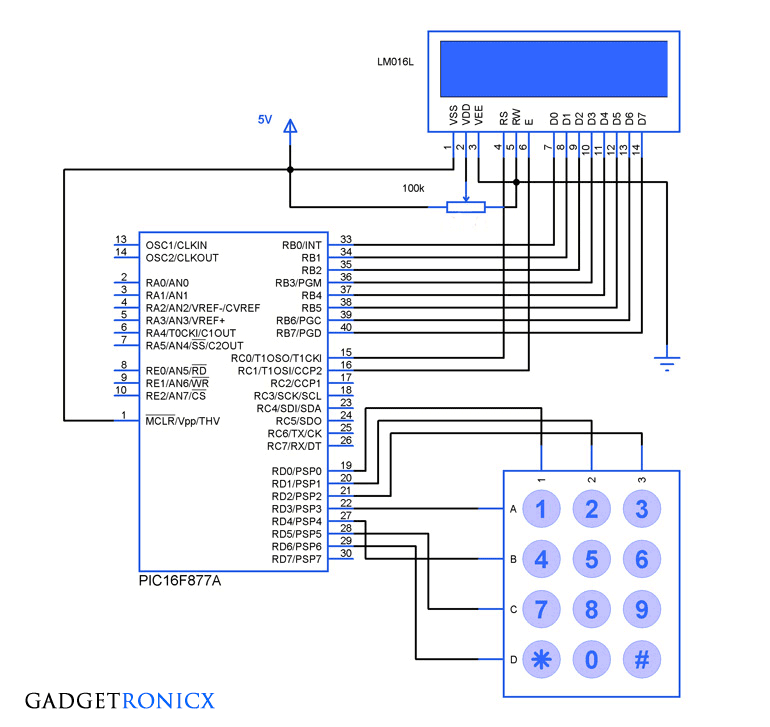
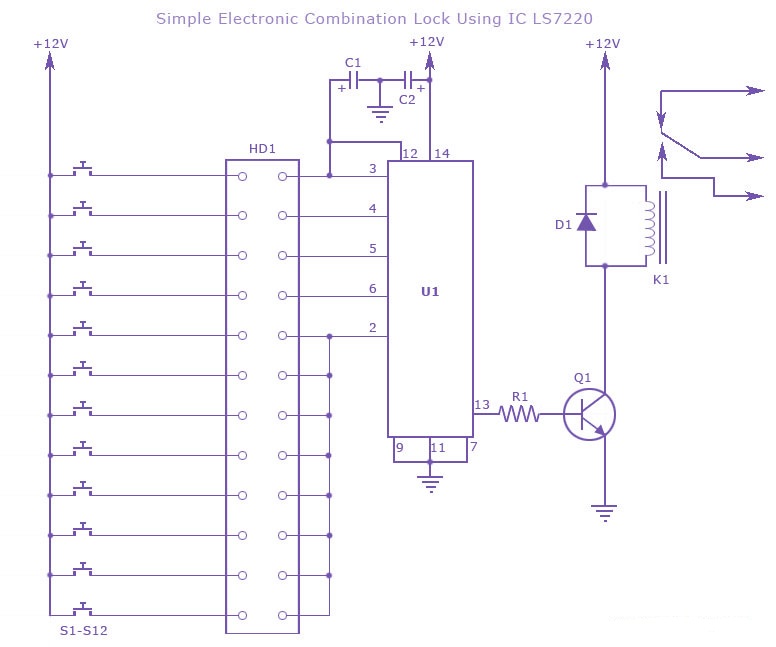
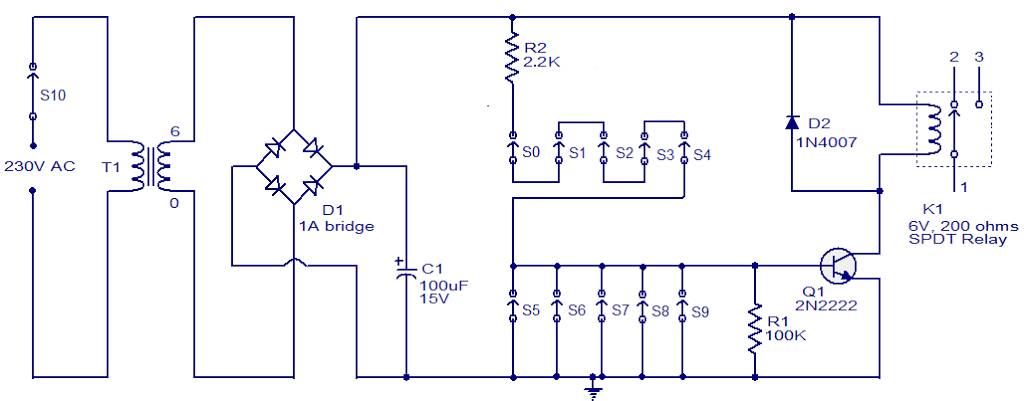
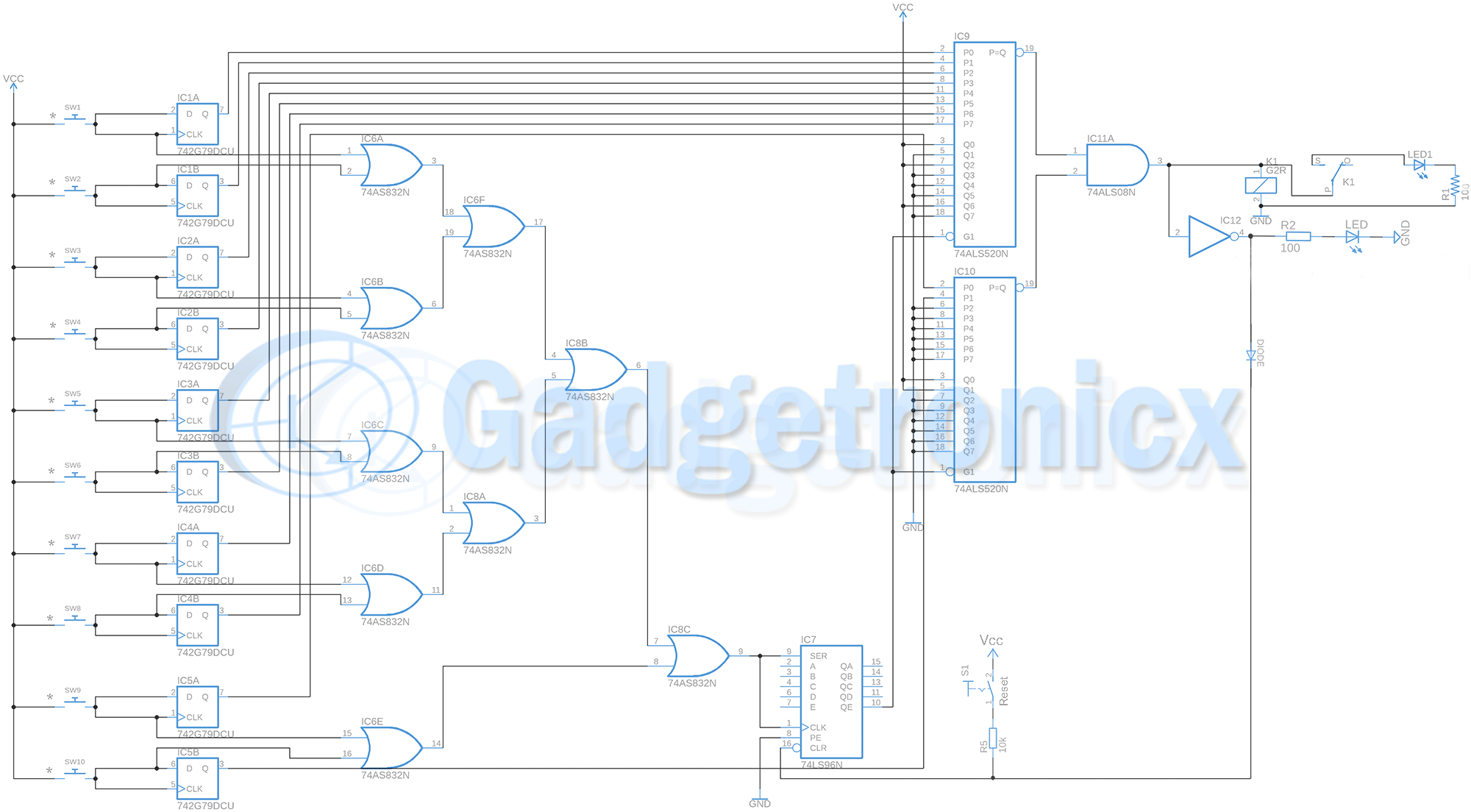
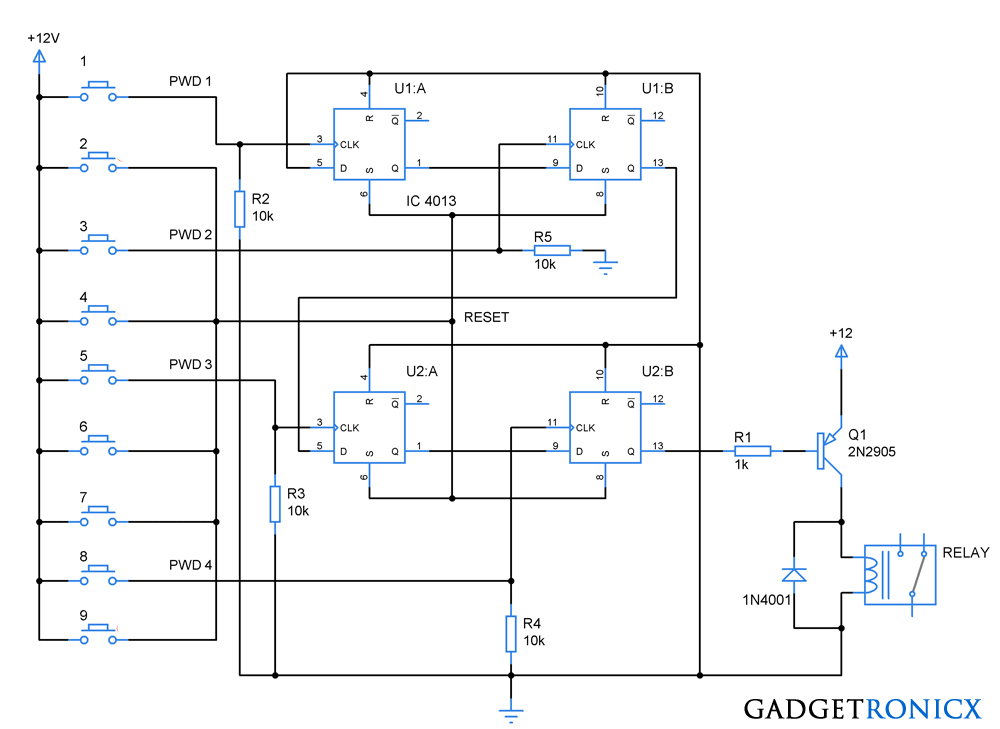
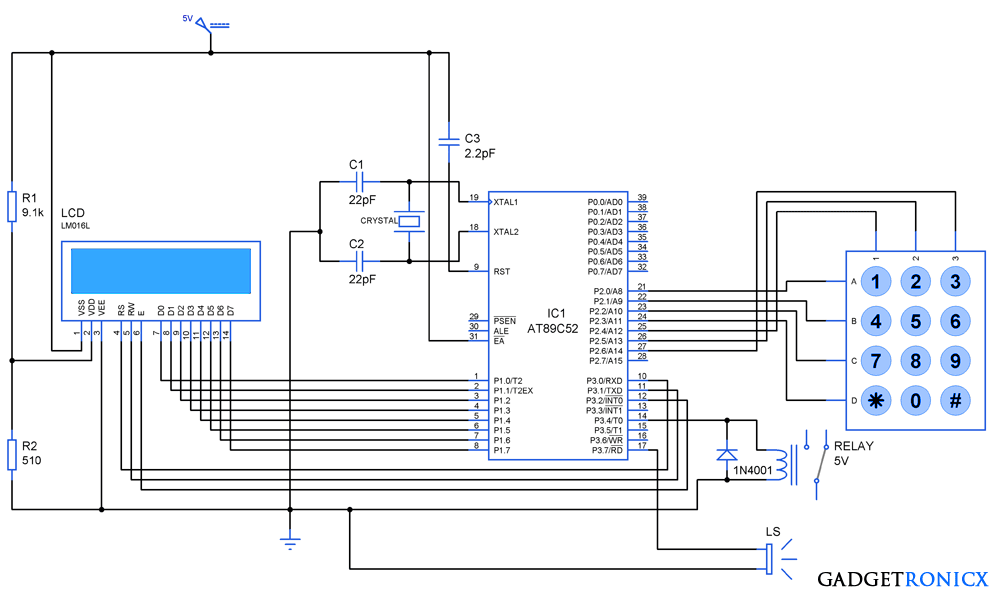
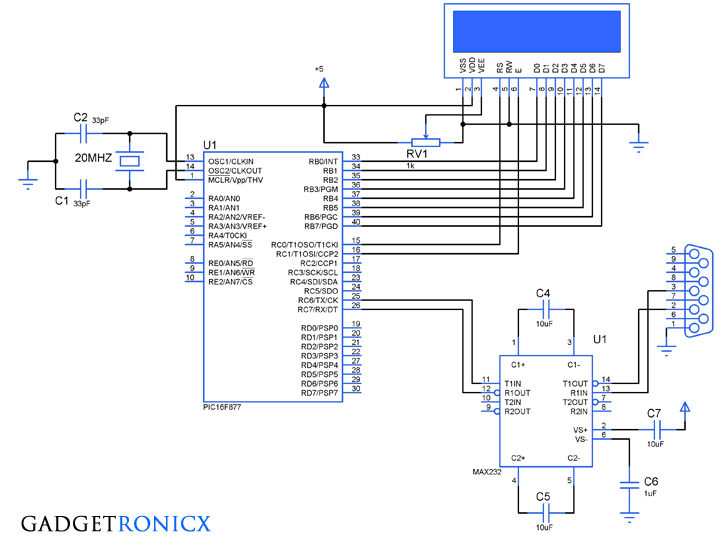
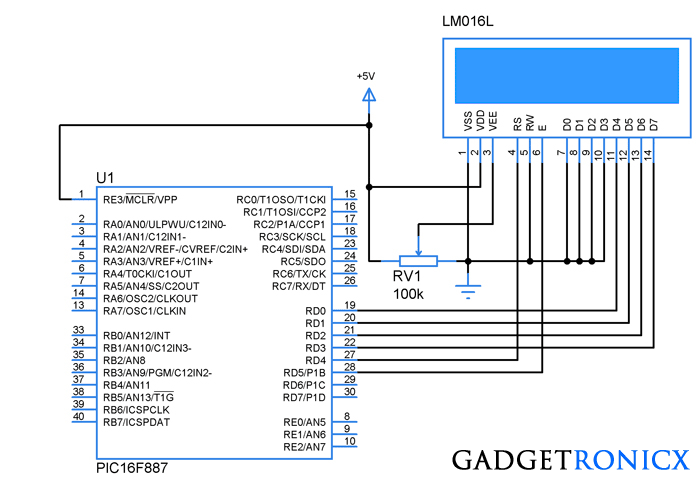

hi frank, can you send to me the hex file? nurainaaamira97@yahoo.com
hello Frank. can i get the hex file and the stdio.h file? please sir.. cause my LCD do not give any output. Thank you in advance. and this is my email, natashajets@yahoo.com
Hi.
Can you please send me the hex file ?
wd522007@gmail.com
I get the undefined identifier for delay_ms error when I try to compile using the CCS compiler (PCWHD )
V4.105!!!
please help me.
I already fixed the error 🙂 thanks for work frank
now how can i reset the predefined code (7196) ?
hi can u show me how to fix the error ? xiiann95@hotmail.com
software to simulate the circuit .
Hey frank. Can you help me by providing the hex file?
Hey frank. can i have the hex file? can u email me?
hi frank.. can you teach me how to fix the error in your code? it says undefined identifier — delay_ms;
Aeron,
Which compiler you are using?
Frank do you have mikroC code for it??
Ahsan,
No, i don’t have it.
i’m using CCS compiler sir
I already fixed the error thanks for your works 🙂
now i dont know how to reset na code from 7196
Hello brother, can i have an option to change the password with the keypad (and that changed password saved in eeprom) what should i add into the code. Kindly help me out.
HI dear friend, I am a student and i looked your project and i am inspired of it. You did it really well. But can you please help me with your code. I want to change little bit for “having option to change the password” is it possible? if so can you please guide me. Thank you so much